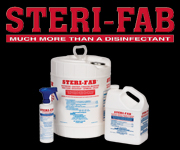As temperatures drop below freezing, private universities are at risk for compromised life safety, facility damage, and slip and fall liability from frozen fire sprinkler system flooding. University administrators and facility managers can prevent these issues with a proper maintenance plan for auxiliary drains. Knowing where all the auxiliary drains on dry fire sprinkler systems are located and performing preventative maintenance on a timely schedule can save a facility thousands of dollars every winter.
Dry fire sprinkler systems protect areas that cannot be kept over 40º Fahrenheit, such as parking garages, stadiums, overhangs on building entrances, and more. Despite the name “dry,” condensation forms in the sprinkler pipes of these systems and—by design—will accumulate in assemblies known as auxiliary drains, low-point drains, or drum drips.
Emptying the condensation accumulated in auxiliary drains is a vital part of fall and winter maintenance. Freezing temperatures can freeze and expand the water, which can break the auxiliary drain. A broken auxiliary drain will release the air pressure in the dry system, thereby activating the system and causing flooding, property damage, and an unprotected facility while the system is being repaired.
Facility managers can prevent this damage with a simple and consistent maintenance plan; all this plan requires is locating all the facility’s auxiliary drains and keeping them empty.
Step One: Locating Auxiliary Drains
What do auxiliary drains look like, and where can facilities personnel find them? Maintenance personnel can refer to building codes for some of the answers. NFPA 13: Standard for the Installation of Sprinkler Systems describes an auxiliary drain as two 1” valves, a 2” by 12” condensate nipple, and a plug or cap. Essentially, this assembly looks like a piece of pipe with valves that have handles on either end. The code also requires the auxiliary drains to be labeled, so there should be a hanging sign or other identifying marker that says, “auxiliary drain.” The exact look may vary from system to system, as some systems use consistent, pre-assembled drains and others use extra components assembled in the field. Some installers leave a plug or cap on the bottom, while others attach a drain line.
Locating every auxiliary drain can sometimes be more difficult than knowing how to identify them. The number of drains on a system varies, and a single drain missed is all that is needed to cause a break. Auxiliary drains are part of dry or pre-action systems which, as mentioned above, protect areas such as stadiums and parking garages where the temperature cannot stay above 40ºF. The drains are required to be in accessible areas, meaning there should be no barriers to prevent service.
The code also requires a sign or map listing the number and locations of all auxiliary drains in the system. However, many system designers, installers, and code enforcers in the industry are unaware of this requirement. If a university’s system does have this sign, it should be located near the dry valve, which should be in a heated room or enclosure with other equipment for that system. If a campus system does not have this sign, facility personnel will either have to ask the system installer or attempt to manually locate all of the drains.
To aid in the process of locating drains, some manufacturers offer water detector devices. These devices can easily be installed on each drain to send visual and/or audio alerts and remote notification when a drain needs service. These alerts simplify drain location and, with proper attention, prevent personnel from overlooking drains.
Step Two: Performing Drain Maintenance
Once personnel locate a drain, how should they perform maintenance? This process is simple, but careful attention should be paid to the order of the steps. The upper and lower valves on the drain should never be open at the same time. Having both open compromises system pressure and activates the system as if it were tripped. Here are the basic steps for maintenance personnel to follow:
1. Close the upper valve.
2. If there is one, remove the plug or cap at the bottom of the drain.
3. Open the lower valve. NOTE: Unless the drain is attached to a drain line, maintenance personnel should have a bucket ready to catch drainage.
4. Allow any accumulated water to drain.
5. Close the lower valve, open the upper valve, and allow for additional water to accumulate.
6. Repeat step 5 until no more water drains from the valve.
7. Close the lower valve and replace the plug or cap (if there is one).
8. Open the upper valve.
This process should always end with the lower valve closed and the upper valve opened to allow for the proper accumulation of more condensation.
Step Three: Service Frequency
NFPA 25: Standard for the Inspection, Testing, and Maintenance of Water-Based Fire Protection Systems provides requirements on when to service drains: after system operation and in preparation for cold weather. After the system operates and is reset, there will be residual traces of water left in the pipes to drain. When preparing for cold weather, water removal prevents freezing.
In both circumstances, the code requires emptying drains daily to start. If several days in a row reveal no water accumulation, the frequency could be lengthened to once every few days or once every week, for example.
However, when temperatures fluctuate between below and above freezing, daily emptying may be the best option. Temperature fluctuations below and above freezing are the biggest cause for broken auxiliary drains, due to uneven thawing and re-freezing of the water.
Step Four: Simplifying the Plan
While the physical act of emptying an auxiliary drain is simple, there is potential for human error in locating every drain and performing maintenance with the correct frequency. Some auxiliary drain accessories on the market, like the water detector mentioned above, can simplify this process.
Flood elimination devices can be installed as a fail-safe above the auxiliary drain to prevent a flood should the drain break. These devices detect a sudden rush of pressurized water and restrict the flow to the drain to eliminate the flooding that would normally occur.
Heated cabinets that encase the drains in a temperature-controlled environment provide more flexibility in draining schedule. With an energy-efficient heater to prevent the drain from freezing, daily draining is not necessary. Self-maintaining and automatic options also decrease the need for manual service.
Heat trace wiring is also an option. Typically used as a method to protect small sections of wet pipe systems from freezing if they need to traverse unconditioned areas, it can also be used on dry systems. It is, however, the most expensive option to install, maintain, and operate for campuses that are trying to keep an entire system or multiple auxiliary drains safely above freezing temperatures.
A Solid Plan to Save Money
Proper auxiliary drain maintenance keeps a university’s dry fire sprinkler system in working order to best protect lives and property from fire damage. Such maintenance also saves thousands of dollars in facility damage by preventing freezing and flooding. Whether following this maintenance guide or relying on some accessories to help, administrators and facility managers can protect their university’s personnel, property, and budget with a solid plan for preventative auxiliary drain maintenance.










